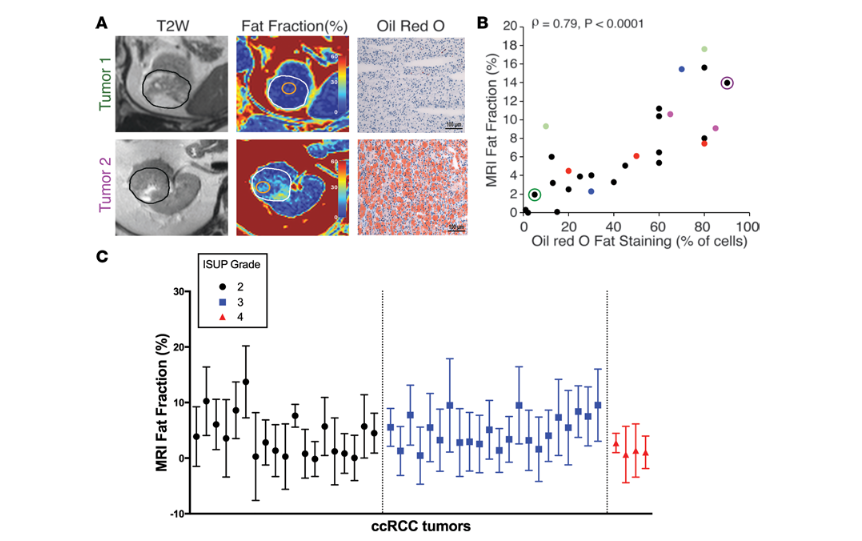Deciphering Intratumoral Molecular Heterogeneity in Clear Cell Renal Cell Carcinoma with a Radiogenomics Platform
We developed a vertically integrated radiogenomics colocalization approach for multi-region tissue acquisition and analyses. We investigated the potential of spatial imaging features at dynamic contrast enhanced (DCE) MRI to predict molecular subtypes using histopathologic and transcriptome correlatives. DCE-MRI identified tumor features associated with angiogenesis and inflammation, which differed within and across tumors, and likely contribute to the efficacy of antiangiogenic drugs and immunotherapies.
Udayakumar, et al. Clin Cancer Res 2021
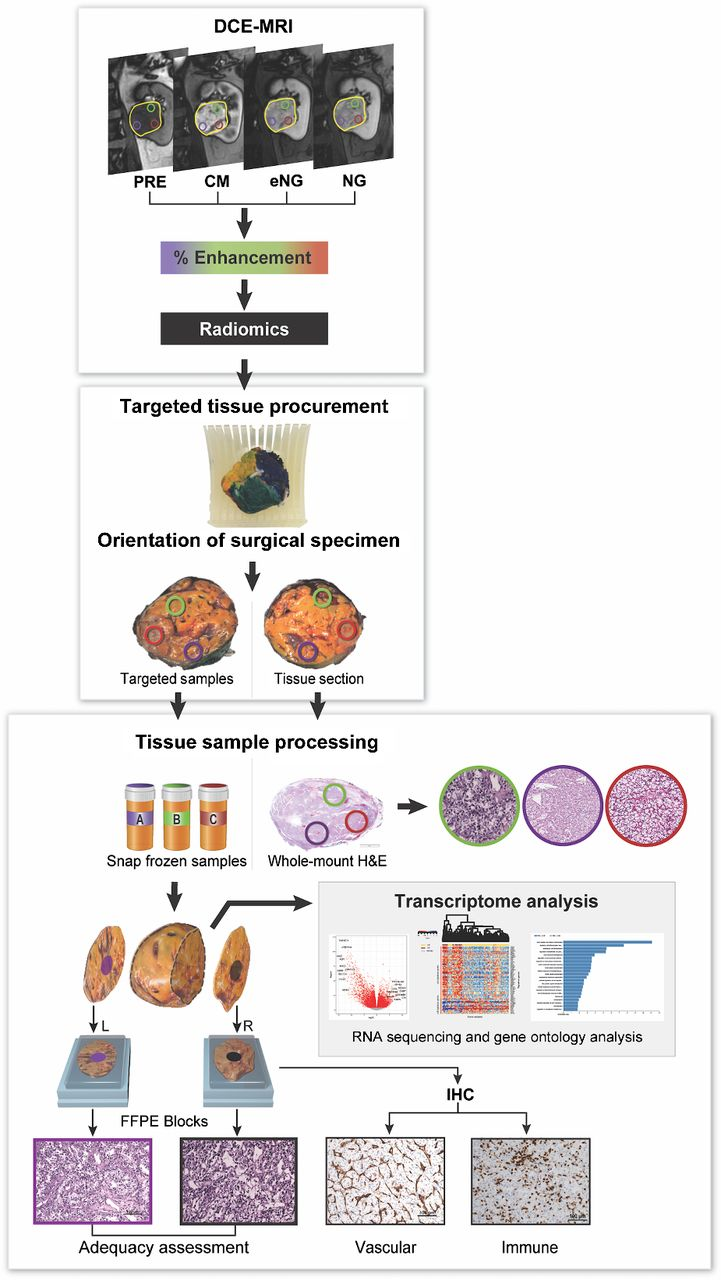
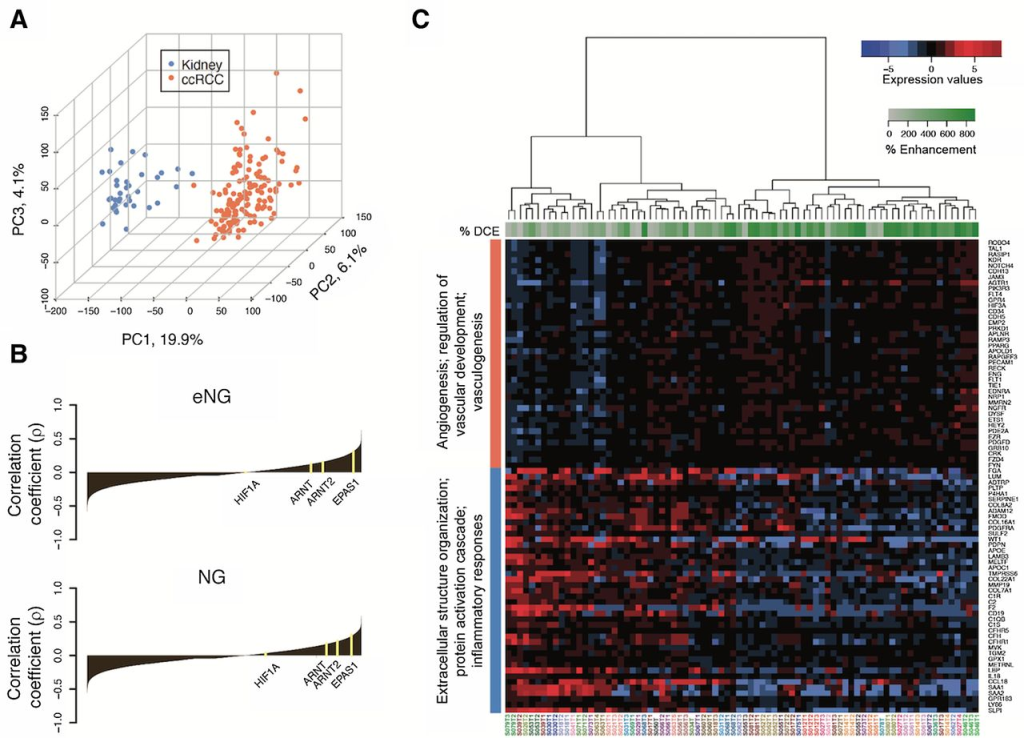
MRI Radiomics Analyses Predict High Grade Histology and Necrosis in Clear Cell Renal Cell Carcinoma
We assessed the ability of radiomics analyses of T2-weighted and dynamic contrast-enhanced (DCE) MRI to predict high-grade histology in 70 ccRCC tumors. Radiomics analysis was superior to tumor size for the prediction of high grade histology in our cohort.
Dwivedi, et al. Clin Genitourin Cancer 2021
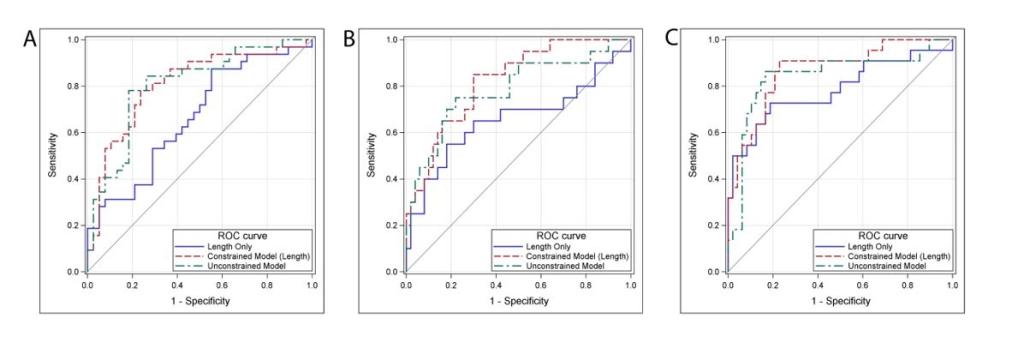
HIF-2 Complex Dissociation, Target Inhibition, and Acquired Resistance with PT2385, a First-in-Class HIF-2 Inhibitor, in Patients with Clear Cell Renal Cell Carcinoma
PT2385 was safe and active in a first-in-human phase I clinical trial of patients with extensively pretreated ccRCC at UTSW and elsewhere. We conducted a prospective companion substudy involving a subset of patients enrolled in the phase I clinical trial at UTSW (n = 10), who were treated at the phase II dose or above, involving multiparametric MRI, blood draws, and serial biopsies for biochemical, whole exome, and RNA-sequencing studies.
Courtney, et al. Clin Cancer Res 2020
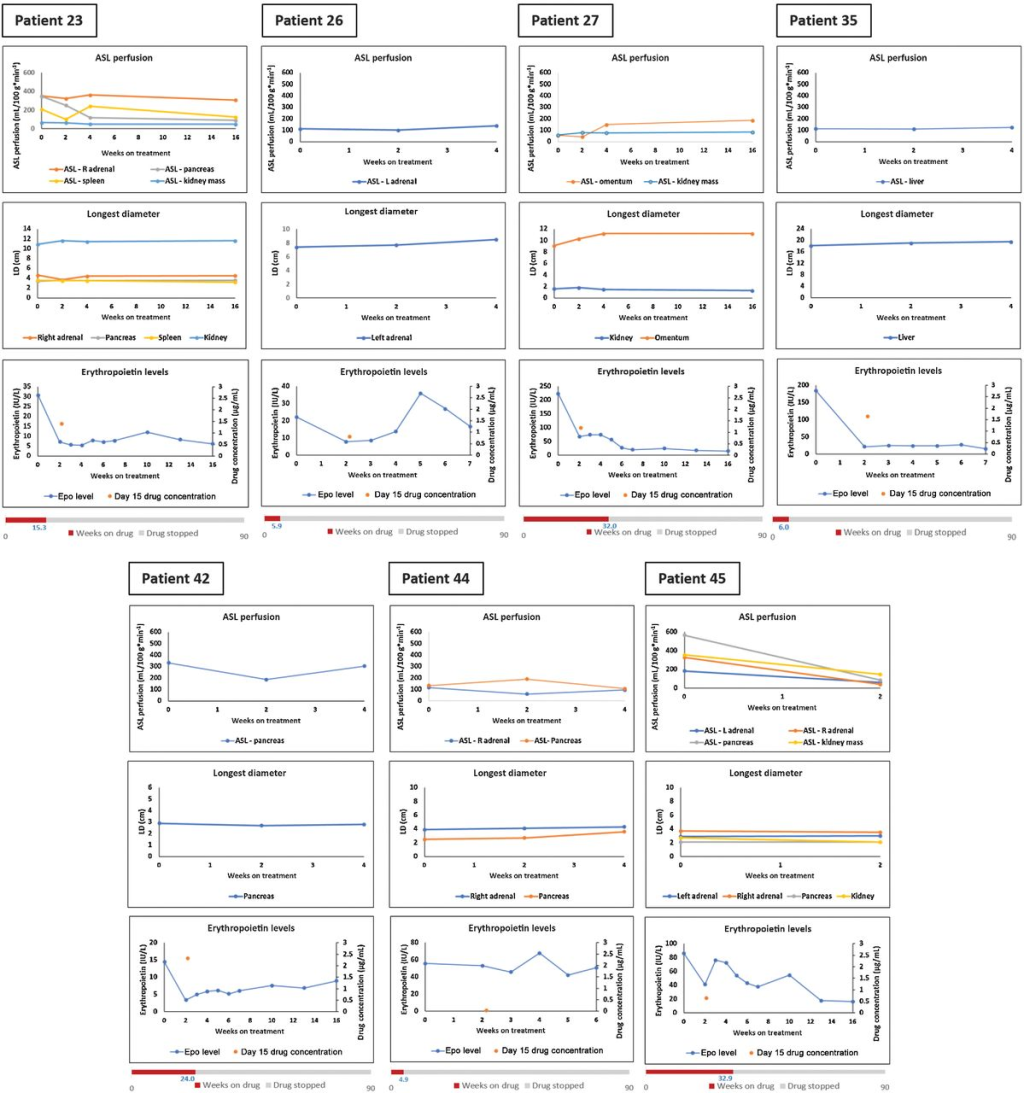
Addressing Metabolic Heterogeneity in Clear Cell Renal Cell Carcinoma with Quantitative Dixon MRI
Dixon-based MRI may serve as a non-invasive quantitative biomarker of reprogrammed lipid metabolism in clear cell renal cell carcinoma (ccRCC). In this work, we propose the use of Dixon MRI as a predictor of tumor aggressiveness in ccRCC.
Zhang, et al. JCI Insight 2017
